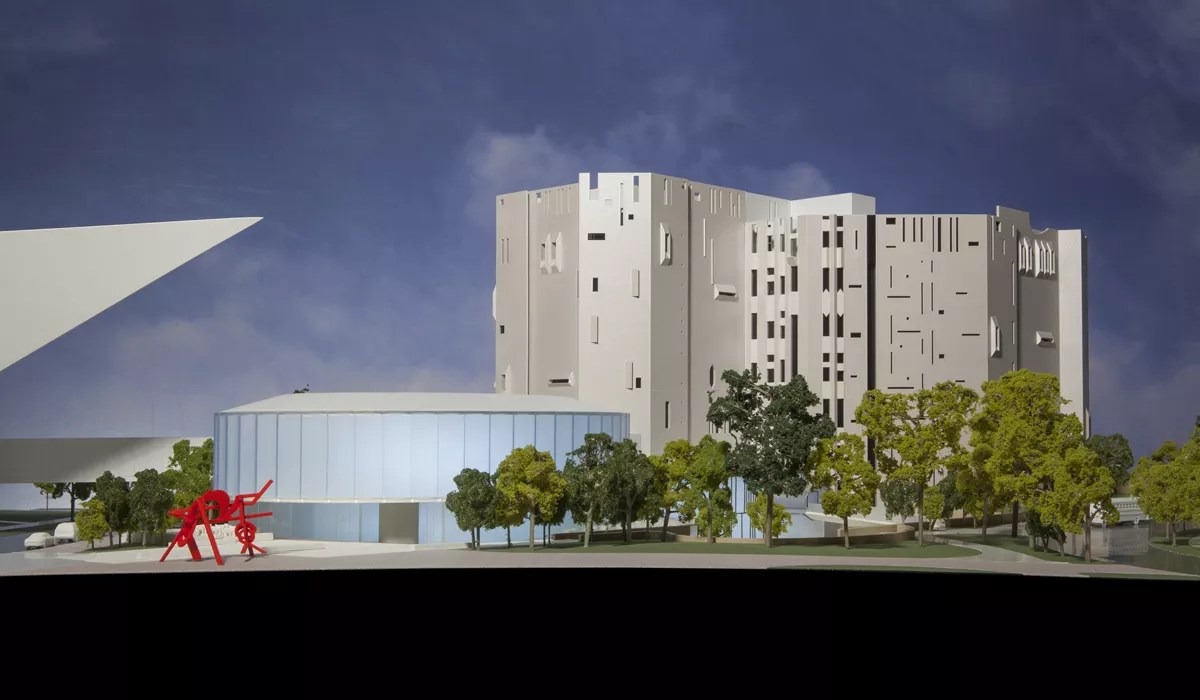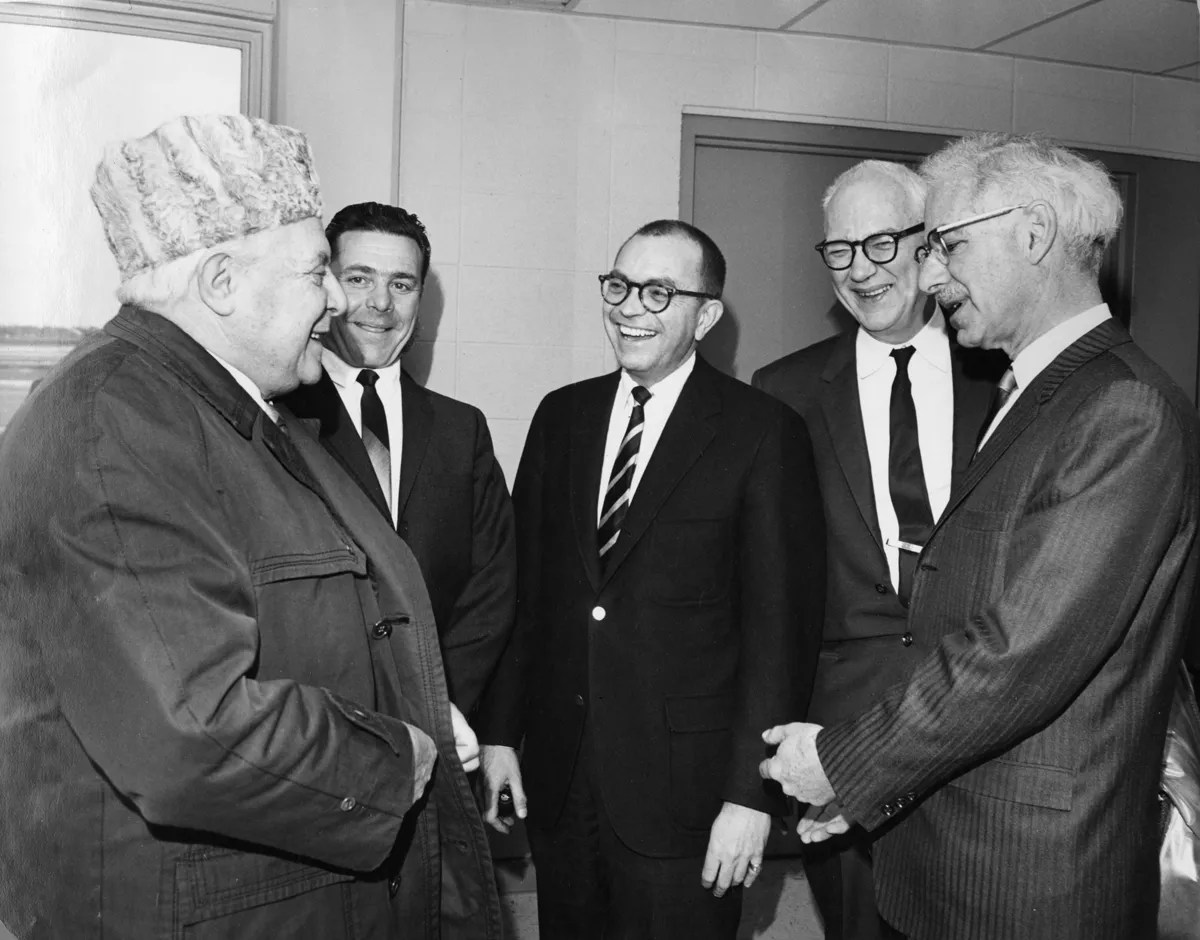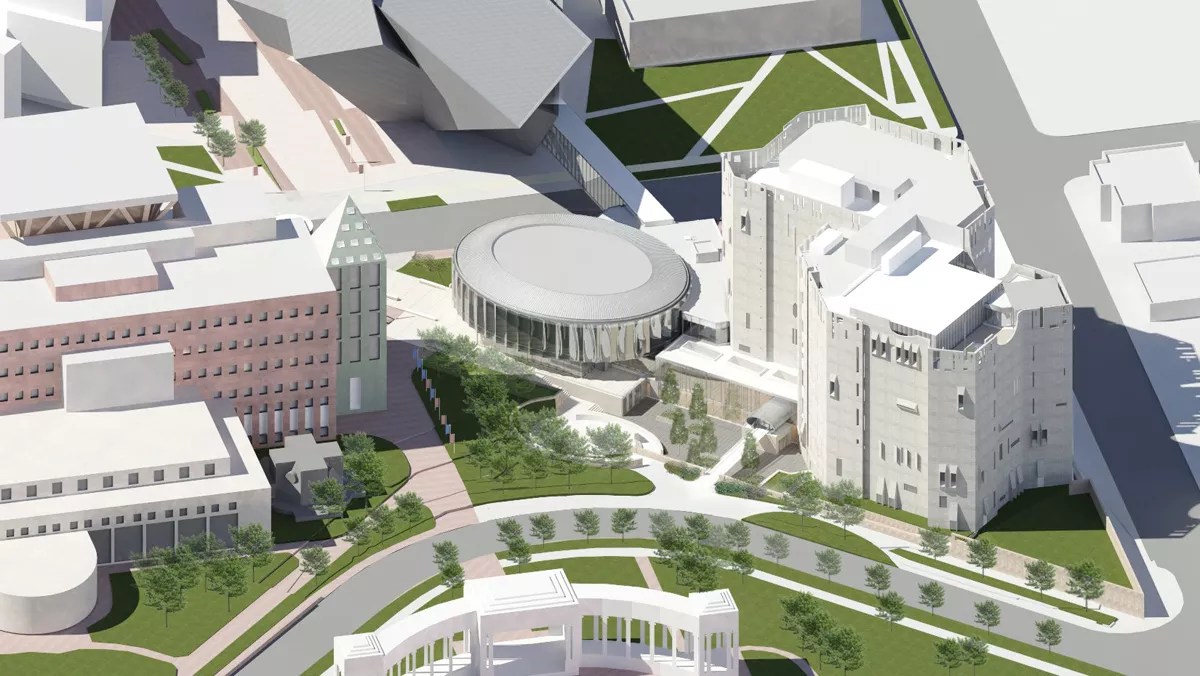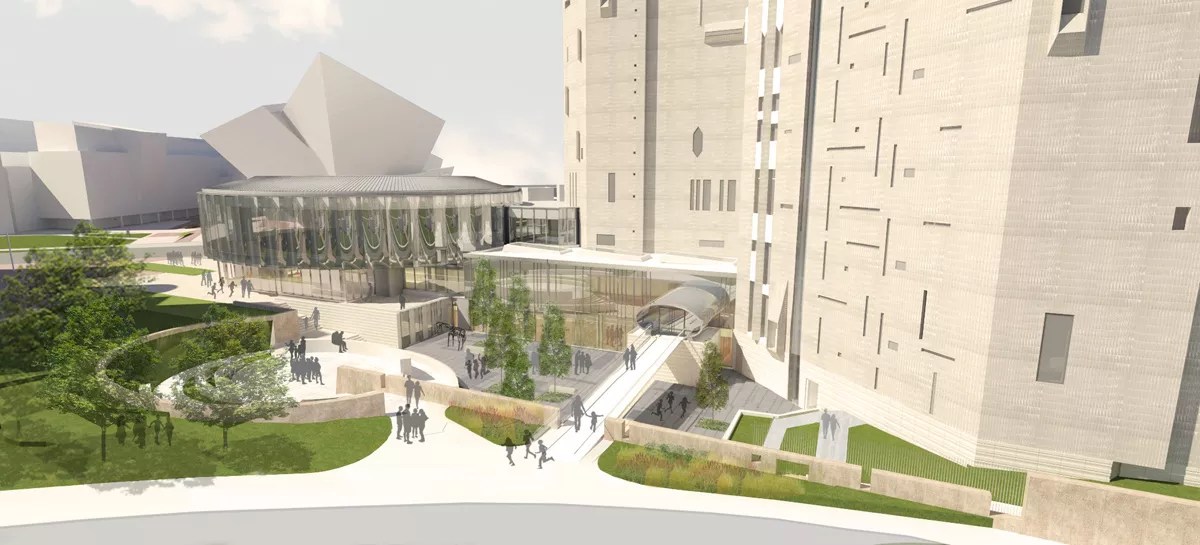
Courtesy Fentress Architects/Machado Silvetti

Audio By Carbonatix
The Denver Art Museum‘s North Building – more commonly known as the Ponti building, in honor of its chief designer, Gio Ponti – will shut down on November 19 and remain closed for the next three years. Ponti’s only work in North America, the structure will undergo an extensive rehabilitation, with a goal of completing the work in time for its fiftieth anniversary, in 2021. To explain what the Ponti building is and how it’s going to change, the DAM has mounted Then, Now, Next: Evolution of an Architectural Icon, which is on view now on the second level of the Hamilton Building. The word “icon” is thrown around a lot, used to label everything from beer to bud, but there’s no hyperbole here: The Ponti is truly iconic.
The show is more informational than inspirational, laying out a simple narrative about the past, present and future of the Ponti. There are enlargements of old and new photos of the building and the key players in its creation; artist renditions of the planned changes; archival items such as scrapbooks, stationery and cards; sample tiles from both the exterior and the interior, and other ceramics and graphics by Ponti.
One of the most important displays is the absolutely sublime original model of the building, created in 1966 by Ponti and James Sudler, Ponti’s Denver-based collaborator and a significant architect in his own right. The model is made of painted cardboard and, considering the fragility of the materials, is in remarkable condition. The model comprises two conjoined towers wedged into the outrageously odd-shaped lot; next to the towers is a one-and-a-half-story box that remains from the previous museum on the site. A vintage aerial photo shows that the old museum comprised a collection of facelifted buildings (demolished to make room for the Ponti) and that still-existing box, which was a 1954 built-from-the-ground-up structure designed by Burnham Hoyt. The box was originally constructed to satisfy the requirements of a gift of part of the Samuel H. Kress Collection to the DAM. Unlike the actual Ponti building, the model includes a football-shaped structure adjacent to the tubular entrance; the curved concrete wall that today runs behind the Edgar Heap of Birds sculpture is the only part of it that was built.

Gio Ponti (far left), traveled to Denver during the design and construction phases and for the opening of the North Building, with (from left, in glasses) architect James Sudler, museum director Otto Bach and Robert L. Silber, president of the Board of Trustees.
Courtesy Denver Art Museum
The overall form of the Ponti was unusual for its time: a mid-rise that, including subterranean levels, is nine stories, with the upper seven used for galleries. This reflected some cutting-edge ideas about museum design. The unusual footprint of the building was derived, at least in part, from then-director Otto Bach’s interest in exploring visitor experiences and exhibition fatigue. By stacking the floors – admittedly the only option, considering the site – and cutting them in two, Bach aimed to make it easy for viewers to take in an exhibition without having to go through the rest of the museum; they would just zip up the elevators. And it worked.

Original 1966 North Building model.
Courtesy of Tryba Architects
Not far from the original model is a new model done by Fentress Architects and Machado Silvetti, the two firms overseeing the rehabilitation work. Before I saw Then, Now, Next, I interviewed Jorge Silvetti, a principal at Machado Silvetti, and asked what was in store for the Ponti. Silvetti is an expert in museum design and, more important for this particular project, a scholar with a longtime interest in Ponti. His obvious appreciation of the building was impressive, and he pointed things out that I had never considered. For example, the Ponti is actually a bulky, hulking shape that should be oppressive, but Ponti made the massive volume disappear behind a multiplicity of 28 thin planar walls overlapping one another. The reflective glass tiles that cover the walls, along with the various patterns in which they are laid and the arrangement of the eccentric window shapes scattered across those walls, all come together to make the building’s mass dematerialize, so that it appears light and soaring instead of squat and inert, as its form might dictate.

An architectural rendering of the new site.
Rendering Courtesy of Fentress Architects and Machado Silvetti
The Fentress/Silvetti model reveals the many changes that are planned. Surely the most radical is the aggressive way that the front of the building is being handled. That curved wall of the never-built element will be demolished, as will the pre-existing wing by Hoyt; a recessed outdoor courtyard will replace the curved wall at the already extant garden-level entrance. Access to the tube entrance will be reconfigured so that it will be across a bridge spanning the newly opened up space below. In place of the Hoyt wing, there will be a major new element that reads as freestanding, a glass pavilion in the form of an oval solid that will serve as an entrance and welcome center; its almost hidden connection to the Ponti is further massaged by the extension of the glass curtain wall to meet it. Silvetti explained that the curved form of the new pavilion is consistent with Ponti’s original design vocabulary for the building, using the scoops on the skyline and the tubular entrance to thoroughly prove his point. And it’s undeniable that the ovoid shape works perfectly in the composition, both balancing and offsetting the vertical planes of the towers.

The new entrance and welcome center.
Rendering Courtesy of Fentress Architects and Machado Silvetti.
It’s dangerous to mess with a building’s principal vista, let alone mess with one as significant to Denver and architecture in general. But despite the inherent dangers, the plans for the Ponti appear amazingly sensitive, and it’s comforting to have someone like Silvetti, with his keen understanding of Ponti’s oeuvre, involved in the design.
The other major change to the exterior is more subtle and will be barely discernible from the street. The seventh floor is only half enclosed; the other half is a roof deck. Ponti had proposed a members’ club and patio for that level, but they were never completed. The new plan calls for constructing galleries to cover most of the open area, yet retain roof access with two new terraces.
Inside, in addition to those new seventh-floor galleries, the second floor, which is a mezzanine, will be extended, greatly expanding its floor space. The main floor and the garden level will be reconfigured to accommodate school groups and regular visitors. The two existing elevators will be replaced and two new elevators added. And plumbing, heating, ventilation, electrical and other mechanical systems will be brought up to current standards.

A view of the proposed welcome center from the Hamilton parking garage.
Rendering Courtesy of Fentress Architects and Machado Silvetti
All of this will cost a lot of money – an estimated $150 million, with most of it privately sourced. Well-known donors J. Landis and Sharon Martin made a gift of $25 million; when the building reopens, it will be called the J. Landis and Sharon Martin Building. Anna and John J. Sie donated $12 million; the new welcome-center pavilion will be named for them. The DAM also hopes to receive $35 million from the city if 2B, the cultural facilities bond proposal, passes next week.
When the Hamilton was completed more than a decade ago, the need to upgrade the Ponti was already known. Initial planning began over five years ago, shepherded along the way by DAM director Christoph Heinrich, who is determined to ensure that the building will serve future generations. If you haven’t been there for a while, go now – not only to catch Then, Now, Next, but to take a last look at the Ponti in its current form.
Then, Now, Next, through February 25, Denver Art Museum, 100 West 14th Avenue Parkway, 720-865-5000, denverartmuseum.org.